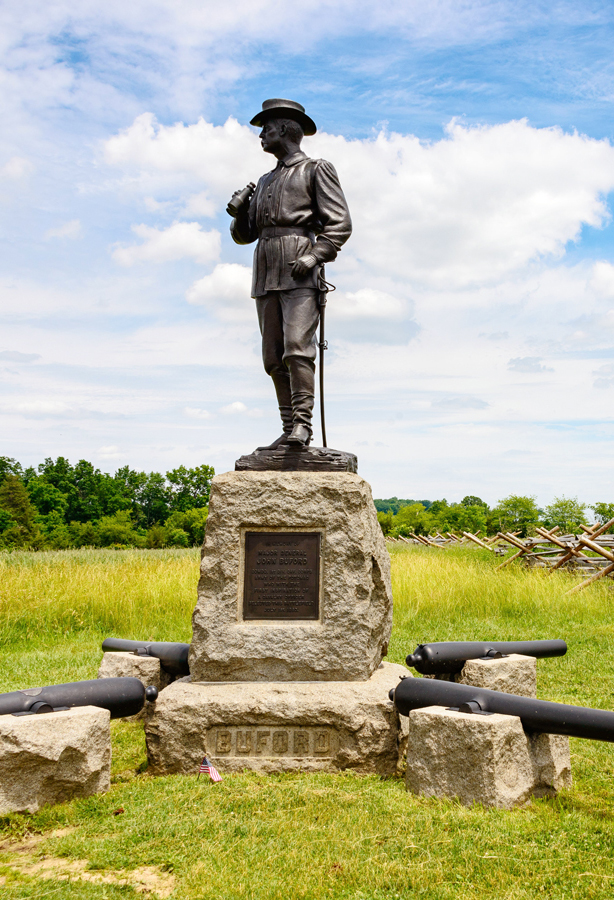From the great battlefields of the Revolutionary War to the places where the Civil War began and ended, the United States is peppered with historic battle sites. They each have played a pivotal role in the nation’s history and stand as a true testament to the resilience of the soldiers who fought there. Explore six of the best battlefields and most historic battle sites every U.S. history buff should visit.
Chalmette Battlefield – Louisiana
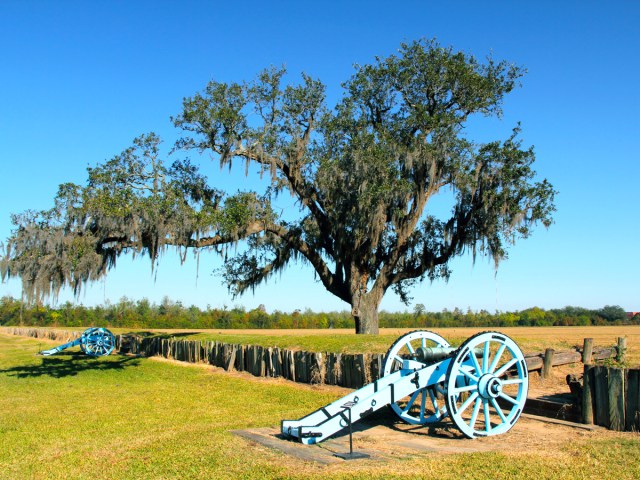
Located downriver from New Orleans, Chalmette Battlefield was the site of the last great battle of the War of 1812, fought between the U.S. and Great Britain. Although the Treaty of Ghent was signed in late 1814, the war continued. On January 8, 1815, General Andrew Jackson assembled troops from across Louisiana and the southeastern U.S. to defeat the British military and prevent them from gaining control of a critical port on the Mississippi River. The Battle of New Orleans was hailed as the final victory in the “Second War of Independence,” and for decades it was celebrated as a national holiday, much like the Fourth of July.
A visit to Chalmette Battlefield offers the chance to walk in the footsteps of General Jackson (who went on to become the seventh U.S. President) and his troops. It contains a reconstructed American rampart, an original home from the 1830s, and the stunning,100-foot-high Chalmette Monument. Delve further into the history of the battle site via films and exhibits at the visitor center, where you’ll find outdoor exhibits, self-guided tours, and daily ranger talks. Also of interest is Chalmette National Cemetery: Established during the Civil War in 1864, it shelters more than 14,000 graves of Americans, dating from the War of 1812 to the Vietnam War.
Fort Sumter and Fort Moultrie – Charleston, South Carolina
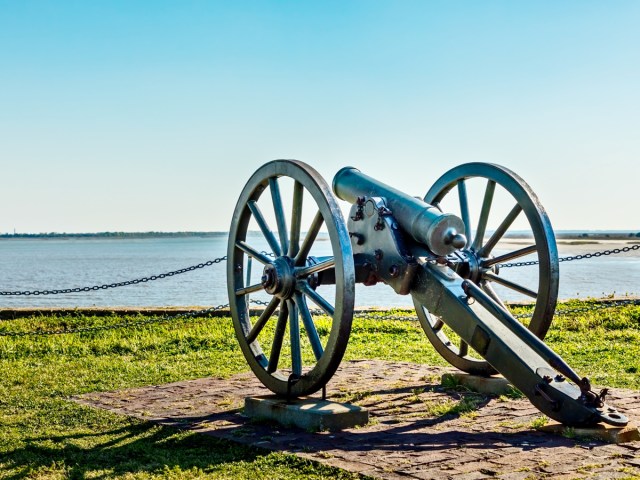
On June 28, 1776, Continental soldiers at Fort Moultrie put an end to an attack by nine Royal Navy warships, thus saving Charleston from British occupation. Eighty-five years later, on April 12, 1861, Confederate forces fired on Fort Sumter — marking the beginning of the American Civil War. Fort Sumter and Fort Moultrie National Historical Park protects both these historical forts standing guard over Charleston Harbor, in addition to the Charleston Light and Liberty Square.
Fort Sumter is accessible only by the official ferry boat, departing from Patriots Point Naval and Maritime Museum and Fort Sumter Visitor Center. There, you can learn about how the fort was built and the events leading to the 1861 battle. Activities at the fort include rangers talks and — for visitors taking the first and last ferries — the raising and lowering of the American flag.
Fort Moultrie Visitor Center traces the story of American seacoast defense from 1776 to 1947. Check out the fort’s battery, powder magazine, and General William Moultrie’s grave, among several notable sites. Outdoor activities such as birding, fishing (with a license), nature walks, and wildlife viewing are also available.
Shiloh National Military Park – Tennessee

The Battle of Shiloh, also known as the Battle of Pittsburg Landing, was one of the most significant battles in the Mississippi Valley Campaign of the Civil War. The Union’s victory on April 7, 1862, came at a high cost, resulting in more casualties than in all of America’s previous wars combined.
Occupying over 5,000 acres, Shiloh National Military Park offers visitors the chance to discover several historic sites. These include the Corinth Battlefield Unit, which preserves the Siege and Battle of Corinth, and the Shiloh National Cemetery, the resting place of around 4,000 fallen soldiers. Also found here are the Shiloh Indian Mounds, an archeological remnant of the South Appalachian Mississippi culture that lived in the area around 1200 CE.
A great way to explore the park is by driving its 12.7-mile, 22-stop self-guided tour of the battlefield. Alternatively, visitors can hike along trails or ride a bicycle or e-bike around the paved roads. Whichever way you get around, you’ll get the chance to spot local wildlife, including 186 bird species, such as the majestic bald eagle and great-horned owl.
Antietam National Battlefield – Sharpsburg, Maryland
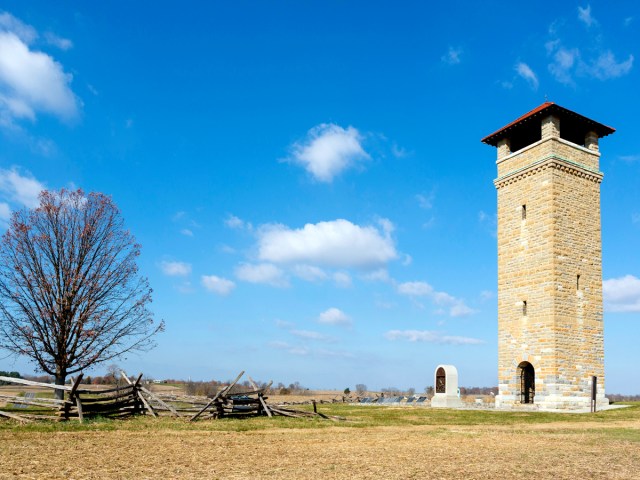
Known as the Battle of Sharpsburg in some Southern states, the Battle of Antietam marked the deadliest single day of combat in American history. Part of the Maryland Campaign, the battle was the first field army engagement to take place on Union soil in the Eastern Theater of the Civil War. It not only put an end to the first invasion into the North by the Confederate Army of Northern Virginia, but also paved the way for Abraham Lincoln to issue the preliminary Emancipation Proclamation.
Antietam is considered one of the best preserved battlefields in the country, allowing visitors to experience its terrain with self-guided tours as well as ranger-led talks. There are several hikes to choose from, like the nine stops of the Final Attack Trail, which passes notable battle sites such as the Burnside Bridge, Artillery Ridge, and McKinley Monument. Be sure to visit Dunker Church, which was an artillery position for Confederates and a focal point for Union advances, as well as the National Cemetery. Open seasonally, Newcomer House is one of the battlefield’s only original homes open to the public.
Gettysburg National Military Park – Pennsylvania
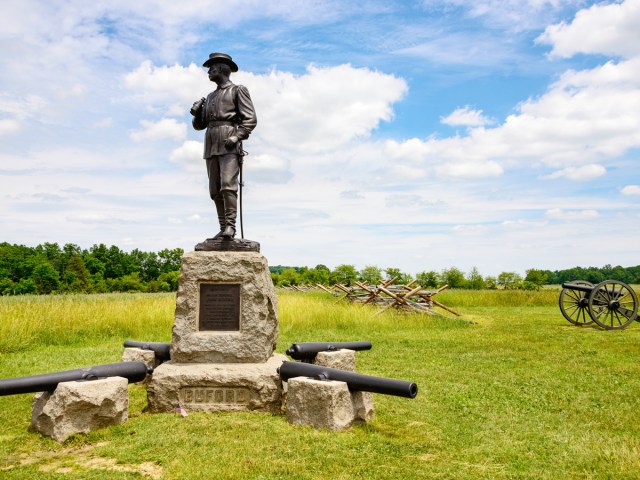
Those immortal words spoken by President Abraham Lincoln in the Gettysburg Address — “four score and seven years ago…” — were inspired by a major turning point in the American Civil War. The Battle of Gettysburg, which took place from July 1 to 3, 1863, marked the end of General Robert E. Lee’s second failed invasion of the North. The Union victory defeated the Confederacy’s ambition of bringing the war to a swift end, but with over 51,000 casualties, the battle stands as the deadliest in the war.
Start your visit of Gettysburg National Military Park at the visitor center and Gettysburg Museum. This 22,000-square-foot museum holds one of the world’s largest collections of Civil War relics. It offers interactive exhibits and multimedia presentations, including the film A New Birth of Freedom, narrated by actor Morgan Freeman.
Then, immerse yourself in history as you stand before the Battle of Gettysburg Cyclorama painting. This 42-foot-high canvas with a 377-foot circumference was painted by French artist Paul Philippoteaux and depicts the fury of Pickett’s Charge, an assault on the third day of the battle. During summer, you can experience the musical sounds of the American Civil War at the Gettysburg National Military Music Muster or witness live recreations and demonstrations of the tools, tactics, and firepower used by the two armies.
Appomattox Court House National Historical Park – Virginia

No battlefield tour is complete without a visit to the village of Appomattox Court House, the place where the American Civil War ended on April 9, 1865. After a series of battles known as the Appomattox Campaign, which engaged almost 90,000 soldiers, Confederate General Robert E. Lee officially surrendered to Union General Ulysses S. Grant at McLean House, bringing an end to the war. The park covers approximately 1,800 acres and encompasses many of the village’s original structures and over two dozen restored buildings, including a reconstruction of the McLean House.
Visitors can walk on the same dirt road where Lee’s army folded their flags, visit the Confederate cemetery, and discover the quaint village of Appomattox Court House. Enjoy both nature and history via the park’s eight hiking trails, which range from short 0.9-mile circuits to longer 4.8-mile walks. There are also several exhibits containing original artifacts of the era, from the pencil used by General Lee to correct the terms of the surrender to uniforms and historic documents. The visitor center also features a 70-seat theater on the second floor, which runs daily projections of the historical film Appomattox, With Malice Toward None.
More from our network
Daily Passport is part of Inbox Studio, which publishes content that uplifts, informs, and inspires.






